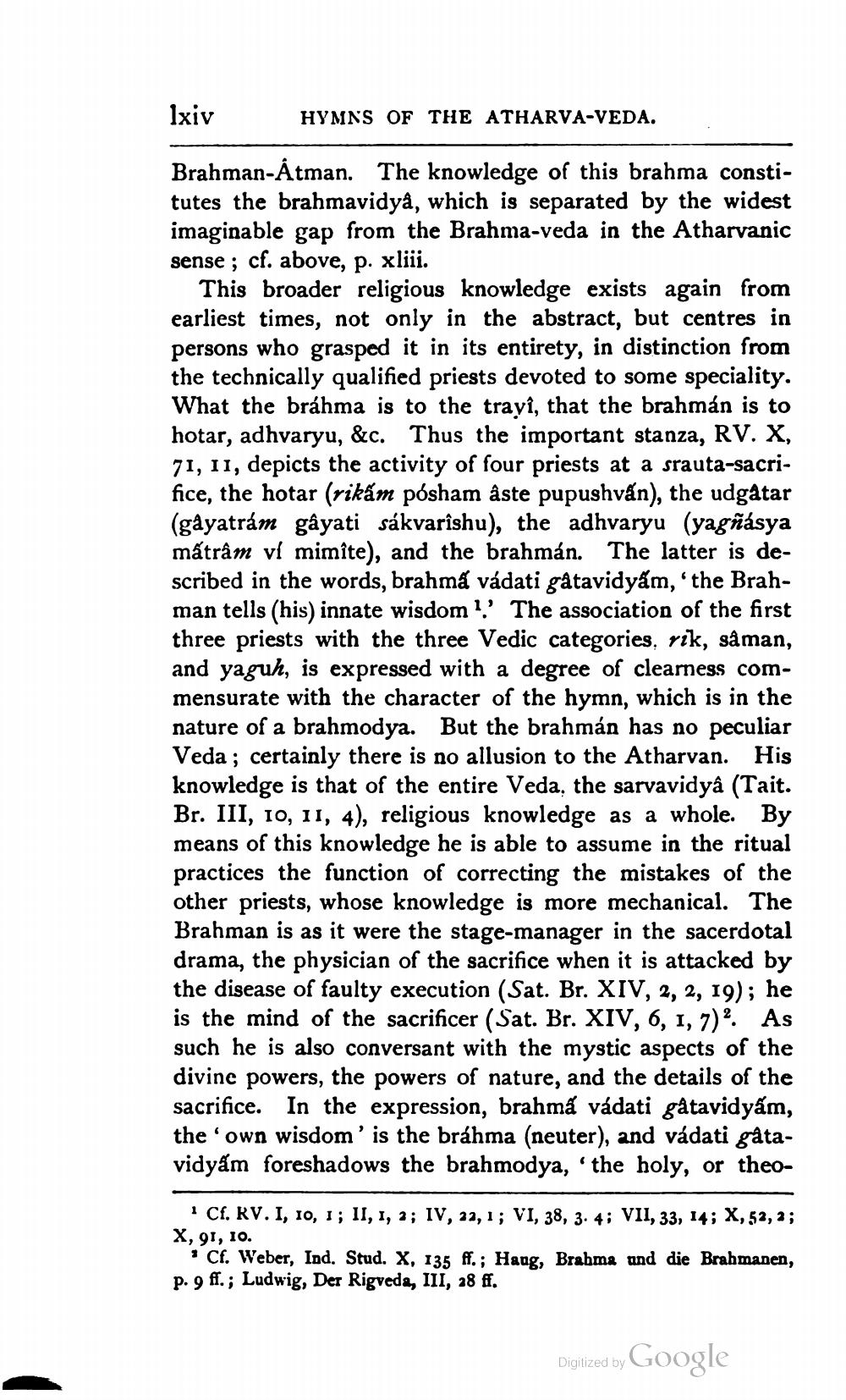________________
lxiv
HYMNS OF THE ATHARVA-VEDA.
Brahman-Atman. The knowledge of this brahma constitutes the brahmavidyâ, which is separated by the widest imaginable gap from the Brahma-veda in the Atharvanic sense; cf. above, p. xliii.
This broader religious knowledge exists again from earliest times, not only in the abstract, but centres in persons who grasped it in its entirety, in distinction from the technically qualified priests devoted to some speciality. What the brahma is to the trayî, that the brahmán is to hotar, adhvaryu, &c. Thus the important stanza, RV. X, 71, 11, depicts the activity of four priests at a srauta-sacrifice, the hotar (rikám pósham âste pupushván), the udgåtar (gâyatrám gâyati sákvarîshu), the adhvaryu (yagñásya mấtrâm ví mimîte), and the brahmán. The latter is described in the words, brahma vádati gâtavidyấm, 'the Brahman tells (his) innate wisdom '.' The association of the first three priests with the three Vedic categories, rik, sâman, and yaguh, is expressed with a degree of clearness commensurate with the character of the hymn, which is in the nature of a brahmodya. But the brahmán has no peculiar Veda; certainly there is no allusion to the Atharvan. His knowledge is that of the entire Veda, the sarvavidyâ (Tait. Br. III, 10, 11, 4), religious knowledge as a whole. By means of this knowledge he is able to assume in the ritual practices the function of correcting the mistakes of the other priests, whose knowledge is more mechanical. The Brahman is as it were the stage-manager in the sacerdotal drama, the physician of the sacrifice when it is attacked by the disease of faulty execution (Sat. Br. XIV, 2, 2, 19); he is the mind of the sacrificer (Sat. Br. XIV, 6, 1, 7) 2. As such he is also conversant with the mystic aspects of the divine powers, the powers of nature, and the details of the sacrifice. In the expression, brahma vádati gâtavidyấm, the 'own wisdom' is the bráhma (neuter), and vádati gâtavidyấm foreshadows the brahmodya, 'the holy, or theo
1 Cf. RV. I, 10, 1; II, 1, 2; IV, 22, 1; VI, 38, 3. 4; VII, 33, 14; X, 52, 2; X, 91, 10.
* Cf. Weber, Ind. Stud. X, 135 ff.; Haug, Brahma und die Brahmanen, p. 9 ff.; Ludwig, Der Rigveda, III, 28 ff.
Digitized by Google




